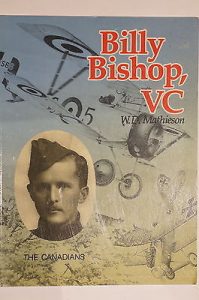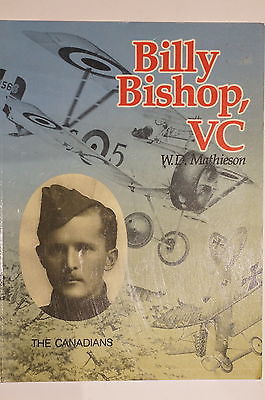Air Marshall William Avery (Billy) Bishop is a stand out pilot of the First World War. Winner of the Victoria Cross, Distinguished Service Order (twice), Military Cross (twice). The epitome of boys own military heroes. Or was he? Lauded in his lifetime for the 72 victories credited to his name, his reputation was tarnished posthumously as the result of a film that raised questions about his greatness. Was Billy Bishop the swashbuckling hero, or a fraud?

Billy Bishop’s early war record
The official record lists Billy Bishop as having 72 victories in the air. This is a record for Canadian Fighter Pilots of the First World War. Many of his victories were single-handed against groups of enemy aircraft. It is for these victories that he won so many medals for bravery and the reputation as a wartime great.
Bishop was enrolled at the Royal Military College before the onset of war. When it broke out he was transferred to the Cavalry. Ill with pneumonia he was unable to depart for Britain. Upon recovering he was moved into the 7th Canadian Mounted Rifles and sailed to Europe. Though the convoy was attacked, Bishops ship arrived safely in Plymouth in June 1915.
Within weeks of arriving in England he applied, successfully, for a transfer to the Royal Flying Corps. He joined in July 1915 as an observer/spotter. Though this role often involved using machine guns, he never fired on the enemy in this role. In April 1916 Bishop was injured as the plane in which he was to fly in malfunctioned. His recuperation involved leave in Canada, arranged as his father was ill. He returned in September 1916 having missed the Battle of the Somme.

Bishop gains his wings
Bishop had become friends with some socialites whilst recovering from his wounds. One of them helped him to transfer to pilot training. He graduated and after a spell flying over London at night guarding against Zeppelin raids he transferred to France. it was at this point, in November 1917, that Bishop’s war record went from decidedly ordinary to quite extraordinary.
From November 1917 to the end of the war Bishop is credited with 72 victories in the air. This is a record number by a Canadian Ace. His heroics were newsworthy and made him a hero in his Canadian homeland. He was feted by not only the media but by the military top brass. His haul of medals saw him presented with multiple decorations by the King.
Bishop’s Reputation
Bishop’s reputation led to him producing a book about his role as an Ace. It was hugely successful. Posthumously plays were made about his wartime efforts, again this was well received. Further books were published and films were focussed upon his heroism.
He had recorded a staggering 25 kills in 12 days. Won the Victoria Cross for a single handed combat over Arras. He became such an important figure for the armed forces in terms of their propaganda and recruiting that by June of 1918 he had to be removed from the front for fear of him being shot down.
Controversy: Was Bishop a Fake?
It wasn’t until long after Bishop’s death that any questions were raised about his wartime record. He had always been a self publicist and his ego was well known, but nobody questioned his integrity or wartime record. Afterall, the victories were on record. In 1982 his record was challenged. A documentary was released in Canada called The Kid Who Couldn’t Miss. The documentary made the sensational claim that the national hero wasn’t quite what everybody believed. It questioned the actions that led to his being awarded the Victoria Cross. It was such a sensational and important claim that the Canadian Senate established a Committee to investigate Bishop’s wartime record.
That committee didn’t actually reach any firm conclusions. It couldn’t prove that Bishop was or wasn’t genuine in the claimed victories or his VC winning combat. Of course, it was in the national interests to retain him as a recognised national hero.
What evidence was there of faking his record?
Some of the evidence is due to the nature of airborne combat in the First World War. It was fast, frenetic and hard to accurately gauge damage that had been inflicted upon enemy aircraft. So pilots and gunners would often be uncertain as to the final outcome. Some within the armed forces, both individually and institutionally, were prone to exaggerate. Having an Ace with numerous kills was good for recruiting. Aces were glamourised in the media, there is a suspicion that some victories were attributed to the wrong man to add to his legendary status. Then there is the case of the Victoria Cross. Nobody actually witnessed this combat. Without any witnesses, it was Bishop’s word or no word to be taken that the events had occurred. Evidence shows that on the day in which Bishop claims this victory, the Germans recorded no losses. This anomaly was seized upon as evidence of faking the story. In truth, such records themselves are often error strewn.
Related Content – Charles Gass, the Ace who wasn’t a pilot

